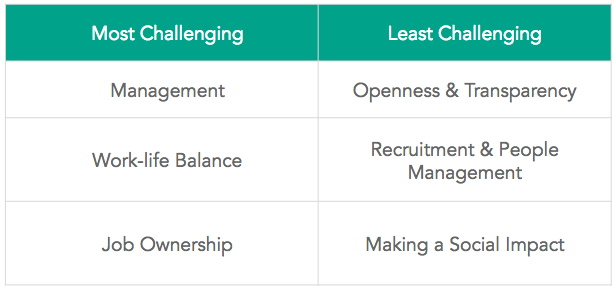
Our culture revolution. Part 4: Setting expectations
We’re just a normal agency. You may own one. You may work for one. We’re ticking along nicely, picking up new business and growing at a good pace. The team size has upped from 1 to 20 in five years, with plans of reaching 50 by 2021. Everyone seems happy. But we want more.
Day Zero was the launch of our manifesto. Its aim? To revolutionise our culture, attract amazing talent, and be recognised nationally as a great place to work.
Over the course of the next few months we’ll be taking you to the heart of Reddico, sharing our highs, our lows, and our eureka moments. We’ll be honest and open about everything. What works. What doesn’t. Whether you’re here for inspiration, to watch us fail, or out of sheer curiosity, welcome along.
No hours. No managers. Rules set by the team. Let’s see what happens next.
The team’s reaction
Over the last couple of weeks we’ve released our manifesto as part 1 and part 2. It details our bigger vision, our values, our beliefs – and above all – the business framework we want to put in place. It was something that took the best part of a year to get right, from conception to creation.
It’s fair to say the finished article wasn’t ready after the first draft. We had to push back the original release date (to the disappointment of the rest of the team), simply because all the pieces didn’t quite slot together.
But what was the reaction when we did get this out to the team?
As you could probably expect, there was plenty of buzz and excitement around the work-life balance section (self-regulated annual leave and ultimate flexibility).
In the past this is one area we’ve (and I’m sure many other small and large businesses alike) struggled with. With multiple line managers comes an inconsistency. For the team it can appear there’s one rule for one, and one for another – especially around working from home.
With the manifesto, we’re putting the decision into the hands of each team member and removing the chain of command for sign-off.
Of course, there were plenty of early questions at that stage, many we couldn’t answer:
How much is too much leave?
What about team members who can’t feasibly take as much leave?
Do we have to work fixed hours?
When can’t you book leave?
Would team members on probation benefit from this?
Then there’s a bigger question to address:
How will we monitor the effect of this to ensure it doesn’t have a negative impact on the rest of our team and our clients?
For the team, the most confusing aspect of the manifesto seemed to be around the new management policies we want to introduce.
This focuses on having two types of managers, because of the different skills required to do each role. Rather than forcing people into management roles to further their career, we want to make sure the right people are supporting and mentoring the team. It rewards everyone for their work and contribution to the company.
You can read more about the breakdown here.
For the team, this premise is confusing to understand at first – and various questions were raised we didn’t have answers for at the time:
Could you choose anyone from the company to be your people manager?
How often can managers be changed?
What happens to existing managers?
Who would manage a new member to the team?
How would the team choose their managers?
Would there be a limit to how many people could choose someone as their manager?
There were areas of the manifesto that instantly resonated with various members of the team, particularly around the charity impact and community support we want to develop. We acknowledged our past efforts hadn’t been brilliant.
And within hours, team members were stepping forward to suggest ideas to improve our reach and create a standalone charity and social committee. I won’t go into too much detail at this stage, but it’s worked really well to date and the team are now a lot more engaged in how we can put our position in the community to good use.
Rolling out the manifesto
With plenty of new initiatives and policies to launch, where do we start?
Throwing everything into the mix at once would just be chaos, so we needed a plan that was structured and spread over a series of months – but also progressive. We needed to show the team change was being made and things wouldn’t grow stale.
With six core areas to rollout, we split it down the middle. Three that would be more challenging, and three where subtle changes and improvements could continually be made over the course of 2018.

Logically, we need to have the processes in place to make sure clients are performing well and love working with us, before giving the team more freedom. We also need to align everyone’s targets to those of the company to ensure people are having a positive impact in their everyday work.
Naturally, this pushes the Job Ownership section to the forefront – focusing on:
Client and individual targets
Internal and external NPS scores
Then, as we realised in the reveal of the manifesto (and during internal meetings where there was a conflict of opinion), the management side of the business and giving people the freedom to choose their managers would be the most difficult to implement. Once other areas have been rolled out, we can focus on this challenge.
As such, the roadmap started to fall into place by itself.

What’s next?
Now the fun really does begin. With the manifesto out there and a roadmap in place, there’s only one thing left to do – start rolling out.
Over the next few weeks we’ll be going into more detail on the NPS survey (both team and client scores), providing information on how individual and client objectives are being set, and tackling perhaps the scariest part of them all – team 360 reviews.
With all this in place we’ll be in a much stronger position to launch what everyone’s most excited about… self-regulated holiday and complete flexibility in working patterns.
Sign-up to Reddico News
To keep up-to-date with the latest developments in the world of SEO, our insights, industry case studies and company news, sign-up here.




